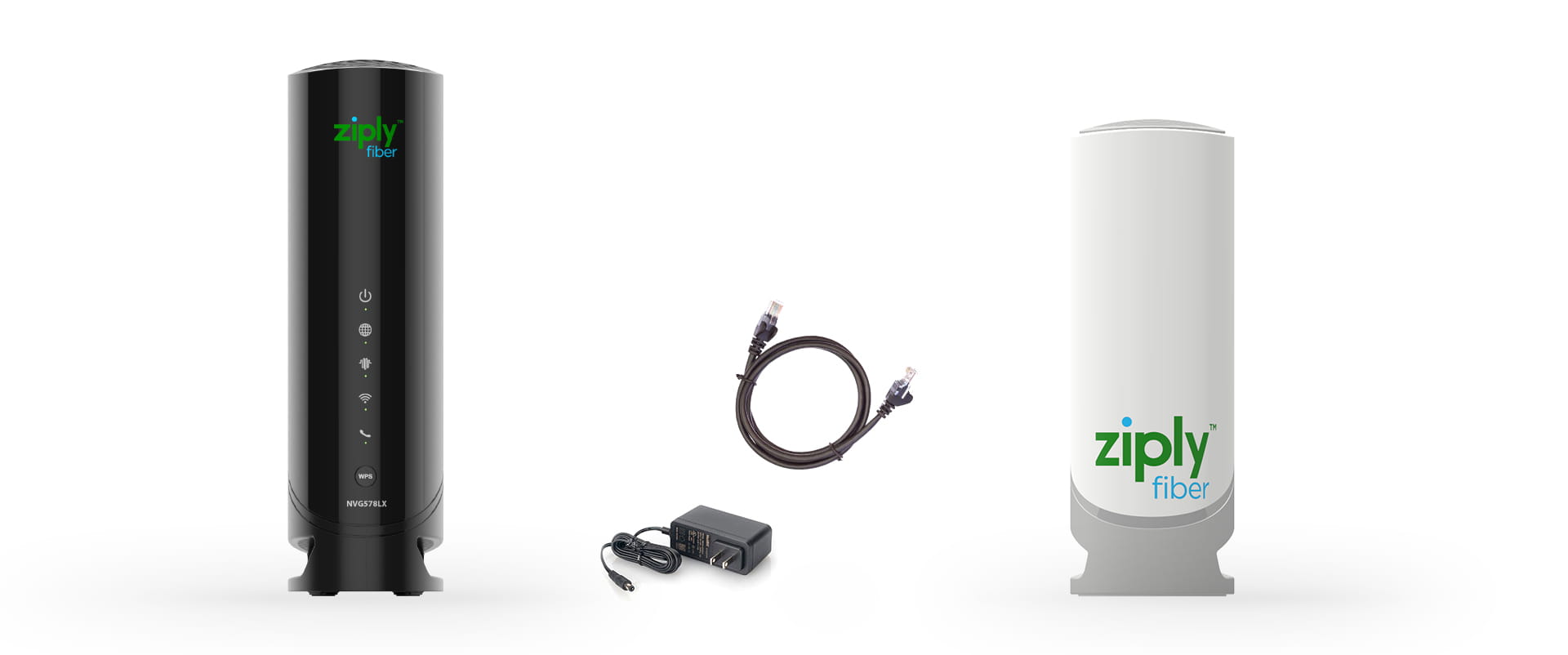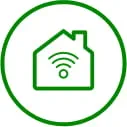Interest in online learning, also known as distance learning or distance education, has skyrocketed in the last few years. The COVID-19 pandemic was a major driver of the uptick in interest, and taking classes online continues to be a popular option. With more people teaching and learning online as a result of the pandemic, internet speed requirements have changed. Now, students and teachers need a reliably fast internet connection so they can engage in all of the required activities for any online class.
Your school or training provider might not have official internet speed requirements for online classes. Even if they do, the published numbers might only speak to the minimum speeds you need for downloads and uploads. There are also different types of online classes, which might have different speed requirements. Classes that are heavy on live discussions, for example, will require much faster internet speeds than classes that mostly rely on discussion boards and asynchronous communication.
Let’s take a look at how many Mbps you need for online classes as well as the speeds you probably want to have so that you enjoy seamless, glitch-free performance.
Table of Contents
How many mbps do you need for online classes?
Improve internet connectivity and performance
What internet speed do you need for Zoom?
What is the best internet connection for remote learning?
Looking to upgrade? Contact Ziply Fiber
How many mbps do you need for online classes?
Internet speeds are calculated by megabits per second (Mbps) and kilobits per second (Kbps). This is the amount of data that can transfer in a second. Now there’s a new speed on the block: gig speed. One gig is equivalent to 1000 Mbps. With Ziply Fiber, you can currently get speeds up to 5 gigs.
Believe it or not, 512 Kbps is the bare minimum download speed you probably need for participating in a typical online class that uses a typical learning management system. That’s according to multiple universities that use the popular learning management system (LMS), Canvas..
Other LMSs might require higher speeds. Blackboard, for instance, requires at least a 1 Mbps download speed and 750 Kbps upload speed according to one college that uses it. These are not high speeds, so if you are not able to upgrade to a faster speed (like if you live in a more rural area), you’ll be fine with any type of internet connection purporting to be “high speed.”
Are the stated minimum internet speeds sufficient?
Here’s the thing about the minimum Mbps (or Kbps) for online classes: while it may get the job done, you may experience more glitches or lagging – especially if you share your home with other people using the internet at the same time.
The minimum speed requirement for an LMS is the absolute slowest speed at which a user can tolerably use the app’s features. Anything lower, and your learning app probably won’t perform as it was designed. If you purchase 1 Mbps internet for your online classes, that 1 Mbps is the maximum speed you will enjoy directly from your modem. If you’re using a wireless router, it will be slower.
In other words, you won’t even be getting the minimum required speed by the time the wireless signal makes it to your laptop.
We actually recommend 1 Gbps download and upload speeds for optimal internet performance in your online classes. That’s the same as 1,000 Mbps.
1 Gbps (also known as 1 gig) might sound like overkill. But gig speeds ensure you always get the performance you expect during your online classes without frustrating slowdowns that could negatively impact coursework. They also ensure equal upload and download speeds, so you can upload assignments without delays or timeouts. Even if you don’t need mega bandwidth for your classes, if you have housemates who are using devices – or even if you have other devices of your own going at the same time, like a phone or smart appliances – you can reasonably expect that lower speeds will disrupt your ability to work online to some extent.
Different internet speeds for different activities
To get a sense of how your internet speed impacts normal, everyday internet usage, here’s a rundown of the download speeds you should insist on for different activities:
| Activity | Number of devices | Ideal download speed |
| Checking email, browsing social media, watching the occasional YouTube video |
1-2 | Around 25 Mbps |
| 4K Ultra HD content streaming and online gaming | 3-5 | 100 Mbps or higher |
| Video conferencing and/or sharing large files at the same time as other activities above | 5+ | 1 Gbps or higher |
Depending on what kind of online class you’re taking, you might be engaging in all of the above internet activities as part of the class. In addition, you might be working on your course while others in your home are using their devices for similar activities.
Here’s how the numbers look for upload speeds:
| Activity | Number of devices | Ideal upload speed |
| Video conferencing | 1 - 2 | 2-5 Mbps |
| Online gaming | 3 - 5 | 6-10 Mbps |
| Publishing video content or sharing other large files at the same time as other activities above | 5+ | 25 Mbps or higher |
Now, factor in the speed lost between your wireless router and your device, not to mention network congestion issues that are common among cable internet users, and it’s easy to see why you should consider a speed of 1 Gbps. It’s basically the only way to be sure you can engage in your online class without any other activities stealing away your bandwidth.
Improve internet connectivity and performance
So, we’ve established that you need more than the minimum download and upload speed requirements for taking online classes. How can you optimize your internet connection?
As mentioned above, having multiple devices connected to your network at once can reduce the remaining internet bandwidth available for your online classes. With that in mind, here are some tips for ensuring you have adequate connectivity for your online classes, regardless of the speeds you’re receiving from your internet service provider (ISP):
- Avoid streaming videos on other devices during your classes.
- Remove any unnecessary devices, such as smart appliances, from your network during class time.
- Unless you need to monitor your phone during class (or you're using your phone for the class) power it down until your class is over. In addition to freeing up more bandwidth, not having your phone to distract you will help you stay focused!
- Ask others in your household to refrain from bandwidth-heavy activities while you're in class: streaming videos, downloading or uploading large files, playing online games, etc.
- If possible, connect directly to your modem or optical network terminal (ONT) using an ethernet cable, bypassing the signal loss from your wireless router.
What internet speed do you need for Zoom?
Do your online classes use Zoom? Thankfully, Zoom publishes minimum speed requirements for using various features in its video calling app.
Since many online classes using Zoom require high quality group video calling (think lectures and group discussions), we will consider the published minimum speeds for that use case when considering internet speed for Zoom. 1 Mbps download speeds and 600 Kbps upload speeds are the minimums for using Zoom in this way.
But remember what we said about minimum speeds earlier? All of those stipulations apply here as well!
Having only the minimum download and upload speeds available for Zoom will result in a passable performance, but probably not what you were expecting from the app. Not only that, you will have absolutely zero bandwidth left over for simultaneous internet activities.
No one wants to get stuck with awkward frozen face. To stay glitch-free, we recommend a much higher baseline internet speed for enjoying optimal performance from Zoom during your online classes.
What is the best internet connection for remote learning?
The best possible internet speed for your online classes is the fastest one you can get.
After all, your education is important. Bandwidth issues can cause you to miss critical material or render you unable to effectively interact with your instructor. That’s why we recommend download and upload speeds of 1 Gbps. With speeds that fast, neither you nor anybody else in your household will need to make any compromises when it comes to their internet usage.
Everyone will be able to perform any online activity at any time. You won’t have to ask others to stop watching movies while you’re in class! You won’t have to turn off your phone either.
The best way to enjoy internet speeds of 1 Gbps at an affordable price is through a fiber internet plan. In addition to being lightning fast for downloads, fiber internet offers reciprocal speeds for uploads, so you never have to settle for an upload speed that’s slower than your download speeds. With fiber, they’re both 1 Gbps or whatever speed option you decide to purchase.
Not only that, fiber internet connections are more reliable. While cable internet connections tend to slow down during peak usage times – because the legacy infrastructure struggles to handle the internet traffic – fiber connections stay fast no matter what. Many of us take online classes in the evening, which is when cable connections typically slow down. With fiber, you will never have to compromise on speed, no matter what time of day you’re in class.
Looking to upgrade? Contact Ziply Fiber
Are you ready to upgrade to fiber internet? Contact Ziply Fiber today.
We’re always expanding our fiber network and currently offer service in areas across Washington, Oregon, Idaho and Montana. Get in touch today to find out if fiber is available in your area, and choose from one of several affordable plans with no annual contracts, no credit checks and no data caps.






